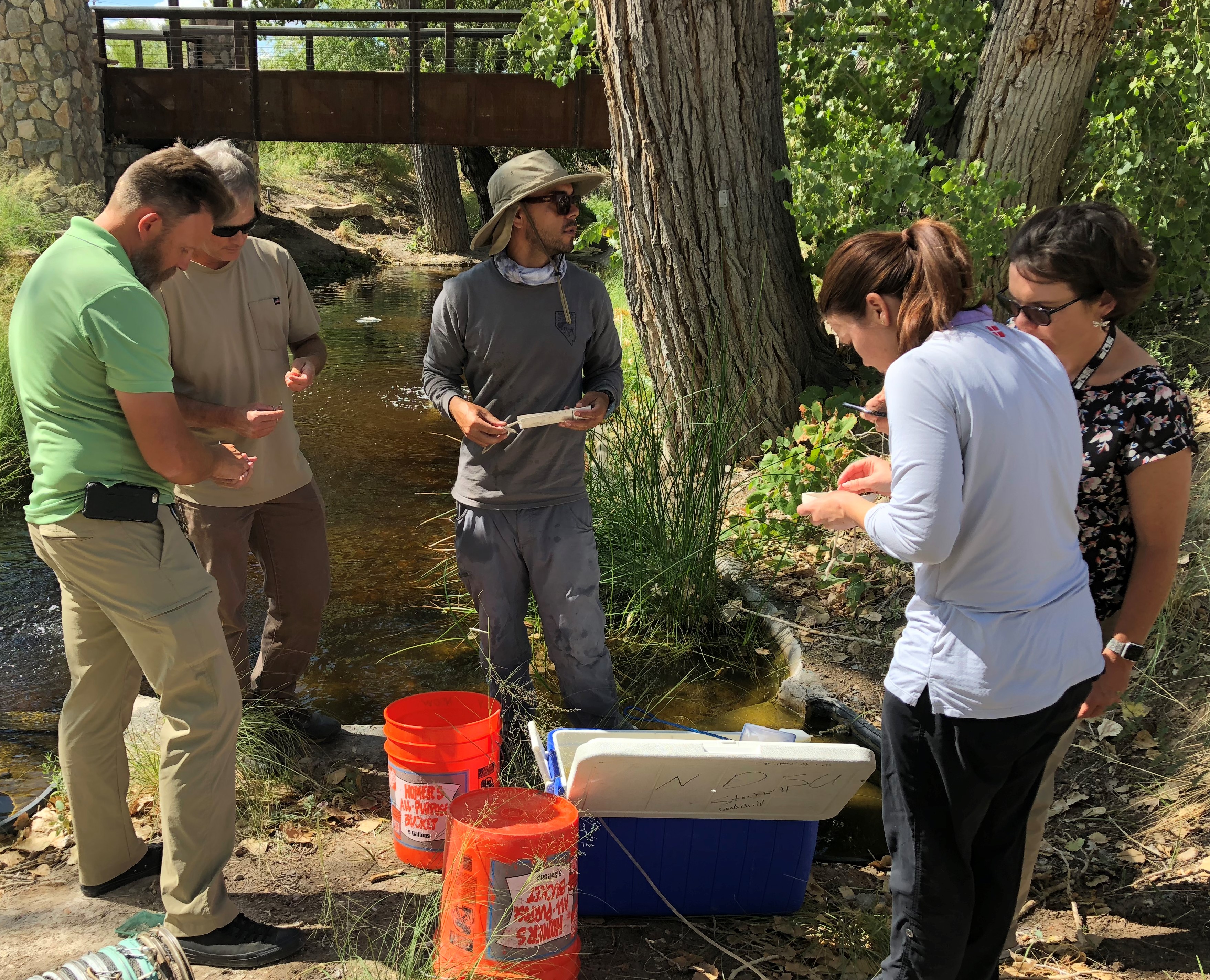

Agency-lead mark-recapture sessions were conducted to assess population status. Population status (i.e., whether the population is stable, increasing, or decreasing) is an important biological indicator of project success. If fish numbers are decreasing, adaptive management strategies can be enacted and try to reverse trends. Conversely, if they are increasing the success can be replicated at other sites.
Mark-recapture sessions are lead by the Nevada Department of Wildlife with assistance from the US Fish and Wildlife Servive, Springs Preserve and Southern Nevada Water Authority staff. Such cooperation leads to better communication and continued project support.
Following a fall mark-recapture session in October of the first year of the project, live fish were collected with a layer of fungus growing over their bodies. A USFWS fish pathology laboratory concluded that “immunosuppressed mature fish were succumbing to opportunistic aquatic bacteria and fungi.” Pathologists speculated that the pathogens were the result of two confounding stressors: (1) environmental – a 7°C degree drop in water temperature (i.e., from 22°C to 15°C between the 1st and 2nd capture sessions); and (2) anthropogenic – trapping, handling, and marking during a mark-recapture survey. Consequently, the timing of mark-recapture surveys was moved from fall to late summer and the issue has not reoccurred since.